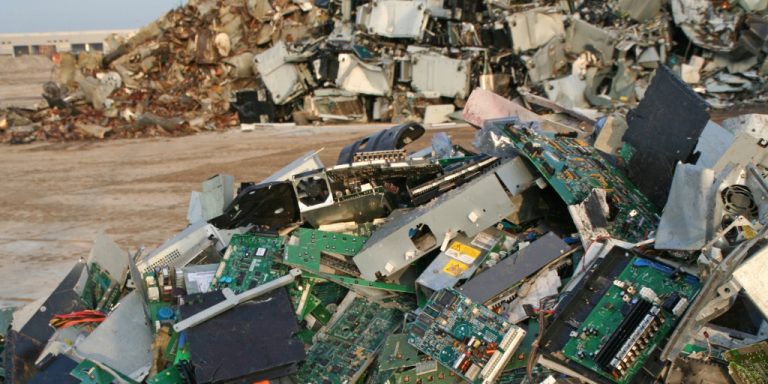
Sustainability is becoming increasingly important for the consumer pool, which is dominated by Millennials and Gen Z-ers. Modern-day consumers have high expectations of their chosen brands. According to a recent survey, the general public expects businesses to do more for climate change, and more than 40% of consumers have already changed their buying habits accordingly. More than 20% are planning to do so in the future.
Becoming more environmentally friendly can help attract new consumers and boost brand loyalty with the existing ones. Furthermore, sustainability often reduces business costs and improves efficiency. States also offer tax incentives for companies that implement eco-friendly practices. Now that you know why pursuing the green agenda is a good idea, here’s how to make your business more eco-friendly.
Know What You Are Doing Wrong
A sustainability audit can help you identify your problem areas and develop a sustainability program. Make a checklist of all the important things you need to check.
Start with the business infrastructure. Do you have what it takes to develop an eco-friendly program? The second item on that checklist should be waste reduction. This needs to be followed by resource conservation, carbon footprint, product development, and supply chain. The information you gather here will help you decide where to begin.
Reduce Waste
Businesses, depending on the industry, produce a lot of waste. For example, cafes and coffee shops that rely heavily on single-use items for take-out are responsible for a large part of 150 million tons of plastic waste that is produced each year.
If you can’t renounce single-use items, at least try to purchase recyclable or compostable plates, mugs, and cutlery. Depending on the type of waste you’re producing, you can also switch to reusable bags, compostable materials, and the like.
You can also minimize your environmental impact by implementing responsible practices within your workplace. Every employee can have their own mug instead of using plastic mugs. Instead of using plastic coffee pods, opt for a traditional coffee maker with washable filters. Don’t use paper unless you don’t have to. And, of course, recycle.
Incorporating sustainable methods into your business practices extends beyond reducing waste and can include energy solutions. For companies looking to take a step further, consider tapping into solar power, maximizing a strategy for effective solar lead generation to significantly reduce your energy consumption and carbon footprint.
Make Transport Greener
The transport of products, materials, and employees to and around the company contributes to its carbon footprint.
If possible, hire local vendors for your supplies to avoid long mileage. Encourage your employees to ride a bicycle to work or start a carpool. Give incentives for them to do so. You can start with one day a week. For example, start a “Leave the Car at Home” day to get them accustomed to that. Another convenient way of eco-friendly transport, if the state laws allow it, is using golf carts, which are easy to drive and maintain. They don’t use a lot of fuel and can be run on electricity as well. Also, golf carts can run on lithium batteries that charge up faster and live longer.
Use Energy-Efficient Appliances
Old appliances tend to use a lot of energy. This includes printers, computers, air conditioners, refrigerators, etc. While throwing them away would be irresponsible in terms of creating waste, you should check if any need replacement and then go for the ones with the best energy star ratings. When getting rid of the old stuff, contact a company that recycles electronic waste. You can also donate the old appliances to those in need.
Switch to Second-Hand Office Furniture
A significant yet often overlooked aspect of sustainability in businesses lies in the furniture we choose to fill our workspaces with. Opting for second-hand office furniture can drastically reduce your company’s environmental impact. Manufacturing new furniture consumes raw materials and energy, contributing to carbon emissions. By choosing high-quality, pre-loved items, you not only extend the lifecycle of these products but also divert them from landfills, reducing waste. Furthermore, this approach often allows access to designer or higher-end pieces at a fraction of the cost. It’s a change that benefits your budget, adds character to your workspace, and most importantly, respects our planet. An office furnished with thoughtfully selected, used pieces serves as a daily reminder of your commitment to sustainability.
Be Careful Who You Work with
While you are responsible for your business practices, the suppliers you work with might not be as green as you’re trying to be. Green procurement means sourcing services and goods procured and produced sustainably. This includes goods that are recyclable, non-toxic, or made from renewable materials.
Reduce Water Use
Public institutions and businesses use more than 25% of the water in metropolitan areas. Even if you are not a big spender, reducing water usage can have a big impact on this precious resource. Begin this process by identifying any leaking faucets or pipes in the facilities. Install low-flow toilets and faucets around the building. And, finally, encourage your employees to cut down on their water use as much as they can.
Adjust the Lighting
Another thing that uses up a lot of electricity is lighting. The first thing to do is provide more natural light. This will get you covered for a large part of the day. If you still have incandescent bulbs, replace them with LEDs. They use up to 30% less energy than incandescent ones and last longer. You can eliminate the risk of leaving the lights on in break rooms, kitchens, or bathrooms, by putting the lights on a sensor or timer.
In Closing
By implementing these green practices, you can not only save money but also establish yourself as an eco-friendly business and attract consumers who support sustainable practices. Of course, these are just a few changes you can make. We are learning more about sustainability by the day, so keep up with the news in the industry and be ready to take it one step further.



